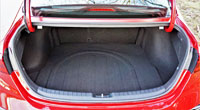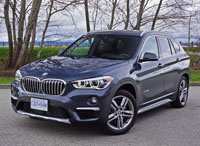
If we don’t count Mini’s Countryman, the BMW X1 was the first subcompact luxury crossover SUV to hit the market. It arrived on the European continent in 2009 for the 2010 model year, a couple of years before it graced our shores as a 2012, while even as it showed up on BMW Canada showroom floors in April of 2011 there was nothing else to directly go up against it. It wasn’t until October of the same year that Land Rover introduced its Range Rover Evoque, thus creating a new automotive segment by providing the X1’s competition, fitting being that BMW once owned the British luxury SUV brand.
Interestingly, it would take an additional three years for Audi to arrive in Canada with its Q3 and Mercedes to enter its GLA-Class, unless we’re counting the much less expensive Buick Encore that showed up in 2013 (but we probably shouldn’t), plus another two years for Infiniti to ante up its QX30 (RIP), an additional three for the Jaguar E-Pace and Volvo XC40, and plus BMW’s sportier X2, and finally one more year for the new Lexus UX. Some more are expected, such as Alfa Romeo’s Tonale for 2022, and potentially Acura’s long rumoured CDX, but take note Infiniti’s already killed off its QX30, which may give pause to Acura. This said, Buick’s done well with its Encore, and while positioned at the lowest end of premium when it comes to price and prestige, an upcoming second-generation Encore, expected this coming year, could do even better.
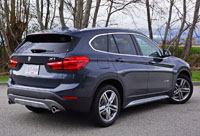
If we choose to consider Buick a real premium brand, then the Encore is by far the sales leader in this subcompact luxury SUV segment, but given its base price of $28,400, which isn’t even as lofty as the Mini SUV’s base price of $31,690, it’s not truly in the same league as the Europeans and sole remaining Japanese. Still, 10,637 Encores sold in 2018 and 8,322 as of October 31, 2019 is nothing to sneeze at, especially when considering BMW leads the category with 5,308 customers in 2018 and 3,753 so far in 2019. Factoring in the X1’s base price of $41,500, mind you, shows the comparison is hardly fair.
By the way, you can get all 2019 BMW X1 package and individual option pricing right here at CarCostCanada, as well as valuable rebate info and dealer invoice pricing that could save you thousands. In fact, you can currently save up to $2,000 in additional incentives on this 2019 model, or $1,000 on the new 2020 X1, all before even asking for a discount. You can also check out all of the above for any SUV mentioned in this review, such as the Mercedes GLA-Class, Lexus UX, Audi Q3, Range Rover Evoque, BMW X2, Volvo XC40, Jaguar E-Pace, Infiniti QX30, Mini Countryman, and even the Buick Encore.
Where that Buick is a heavily massaged Chevrolet Trax that’s stingy on fuel and reasonably generous with features, albeit not so much when it comes to performance or refinement, and BMW offers strong performance along with some of the best quality, refinement and functionality in the class.
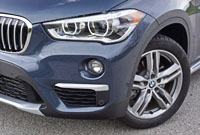
So as not to beat up on the Encore, which I quite like for urban commuting, some of BMW’s challengers wouldn’t have received particularly high marks in all categories just noted, at least initially. The first generation Audi Q3 was weak on straight-line performance and so-so when it came to refinement, while the original X1 wasn’t exactly a marvel of the latter quality either, criticized by many (including yours truly) for less than ideal interior surface treatments.
BMW’s smallest SUV is now in its second generation, and as part of its “upgrade” has had its superb rear-drive E91 3 Series Touring-platform replaced with the aforementioned Mini Countryman’s second-gen front-drive-biased UKL2 architecture, so therefore today’s X1 is a completely different vehicle than yesterday’s. It began out as a low, lean rear wheel-biased AWD crossover, and has morphed into a more conventionally shaped luxury SUV, looking much more like its bigger X3 and X5 brethren. Impressive sales growth in 2016 and 2017 backed up the German automaker’s decision to take the little X1 in its more comfort-oriented direction, and while those numbers slipped slightly in 2018 and so far this year, I’m guessing it has more to do with the brand’s introduction of the new X2 than any lack of X1 interest, while even more importantly the X1 remains number one amongst true subcompact luxury SUVs, even when not factoring in the new X2.
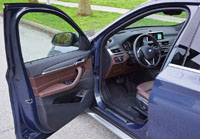
By the numbers, X1’s previously-noted Q3+1 sales of 3,753 units puts it far in front of the second-place Merc GLA with 3,021 deliveries, and does likewise against Lexus’ new UX at 2,374 units, which already stole third from the Audi Q3 due to only 2,374 units sold over the past 10 months. Volvo’s XC40 did quite well for an all-new model at 1,690 units, and Land Rover’s recently redone Range Rover Evoque should be commended for its 1,333 new customers due to its higher than average price, but we really need to laud BMW for finding another 1,159 clients for its segment-busting X2, which did even better than Jaguar’s new E-Pace at only 372 deliveries. As for Infiniti’s now cancelled QX30, 93 deliveries doesn’t represent how good this little SUV was, but more accurately tells a story of luxury brand weakness when compared to the strength of Lexus, plus of course the Germans.
Speaking of German strength, BMW shows just how dominant it is in this segment when we combine the sales of both X1 and X2 models, which have accumulated to 4,912 deliveries so far this year, and that’s even before including 2,082 Countryman sales (Mini is a BMW subsidiary after all), which increases sales to 6,994 units. That’s almost as much as you get when adding up all Mercedes GLA, Lexus UX and Audi Q3 deliveries over the same period, which resulted in just 7,698 sales.
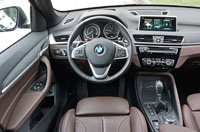
Unless you’re opposed to success, X1 owners should feel pretty good about their choice. Of course, there are many other reasons to feel positive about their X1, particularly if it’s outfitted as nicely as my tester. While the satin-silver trim on the lower valances and rocker panels came standard, the stylish Mediterranean Blue Metallic paint was a worthwhile $895 option, especially because it allowed for the $950 upgrade from base leatherette to luxurious brown Mocha Dakota Leather upholstery across the dash, doors and seats; Oyster Grey and Black leather also available with this colour.
My tester’s open-pore Oak Grain hardwood inlays with chrome and brush-metal accents were no-cost options that made the interior look even more attractive (yet more woods, brushed aluminum or piano black lacquered inlays can substituted), while most surfaces above the waste were finished in high-quality pliable composites, making the X1 feel a bit more premium than most challengers.
While nicer than leatherette, BMW’s Dakota leather is not its highest grade, but you won’t be able to get Nappa or Merino hides in this entry-level SUV. It’s nevertheless genuine leather, boasting the right fragrance, feel and durability, while my tester’s seat inserts were perforated for aeration. This said, the seats didn’t include forced ventilation, but the three-way seat heaters quickly warmed up near therapeutic levels when their highest temperature settings were chosen, making the already comfortable driver’s seat downright cozy.
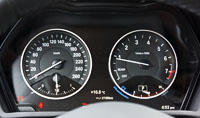
My test model’s front seat four-way lumbar support wasn’t standard, but instead comes as part of two option packages, the first being the $3,500 Premium Package Essential group that adds power-folding side mirrors, proximity keyless Comfort Access, auto-dimming centre/rearview and outside mirrors, a big panoramic glass sunroof, a HiFi audio system upgrade, plus an alarm, and the second as-tested $5,900 Premium Package Enhanced including all of the above as well as a head-up display unit, a universal garage door opener, satellite radio, navigation/route guidance, semi-autonomous Park Assistant, BMW’s ConnectedDrive Services Package, and a power tailgate.
Both upgrade packages are available with a heated steering wheel, as well as a $1,000 Driving Assistant Plus package that includes approach warning with pedestrian alert and light city braking, lane departure warning, adaptive cruise control with stop-and-go and traffic jam assist, plus high-beam assist and speed limit information.
Upgrades in mind, my tester also included a $950 Sport Performance Package with a special Sport automatic transmission featuring steering wheel-mounted paddle-shifters (this worth the money alone), a more reactive M Sport Steering system, plus larger 19-inch alloys, although I should point out that my test model was intelligently fitted out for winter and therefore had a set of 225/50R18 Continental ContiWinterContact tires added to its unique M Sport split five-spoke alloy rims.
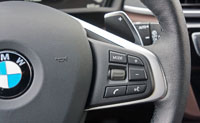
Anyone that’s driven on winter tires will tell you their performance over anything but snow or ice will be compromised, and thus my test model’s handling potential wouldn’t have been able to fully measure up to the regular base wheel and tire package, let alone the performance-oriented 19s it was supposed to be shod with. Just the same it proved more engaging than (more or less) the same X1 wearing 17-inch winters for my 2016 X1 xDrive28i review, which were smaller in diameter due to that older model only coming with 18-inch rubber in base trim.
Other than wheels and tires, not a lot appears to have changed over the past three years, mind you, which obviously (as previous noted by the X1’s sales volume) doesn’t make any difference to X1 owners, or for that matter to yours truly. The X1’s sole engine, a 2.0-litre turbo-four, continues to make 228 horsepower and 258 lb-ft of torque, which is formidable when compared to a few competitors, such as the Lexus UX or base Mercedes GLA, but it doesn’t come close to matching the 375-horsepower Merc AMG CLA 45, or for that matter top-tier trims of the E-Pace, Evoque or XC40, but once again the X1’s popularity proves that all-out performance hardly matters in this practical class.
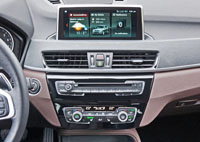
The little BMW was more than adequately powered for my needs, particularly when Sport mode was engaged, which caused the standard eight-speed automatic gearbox to shift quicker, whether actuated by paddles or left on its own. All-wheel drive comes standard, and in wet conditions aided traction in a straight line and during fast-paced cornering, while the X1 certainly feels agile when compared to some rivals. Still, others have an edge when driven to their limits, especially the top-line Mercedes-AMG, while the first-gen X1 was considerably more capable through the slalom too.
I personally believe comfort matters a lot more in this class, and to that end today’s X1 is wholly more viable than its predecessor and some more sport-oriented competitors, whether you’ve set its powertrain to its more relaxed Comfort or Eco modes or not. I find the X1’s ride especially good for its compact size, and while we’re being so practical, even mentioning the little SUV’s thrifty Eco mode, BMW claims a fuel economy rating of 10.7 L/100km city, 7.5 highway and 9.3 combined, which isn’t too bad at all.
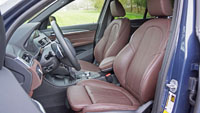
You’ll probably have comfort more on the mind than efficiency when seated inside, however, the driver’s seat of my tester particularly good thanks to its aforementioned four-way power lumbar support, which can precisely find the small of anyone’s back, plus it incorporates power-adjustable side bolsters to snuggly embrace one’s backside, as well as thigh extensions that nicely cup below the knees for lower leg support. The steering column is also more adjustable than some rivals, providing about four inches of telescopic reach, which, together with that driver’s seat, allowed my long-legged, short-torso five-foot-eight body to fit inside perfectly, enhancing both comfort and control of the steering wheel and pedals. Unfortunately this is not always the case, forcing me to power a competitor’s seat squab and/or backrest too far forward for comfort in order to achieve control. Such optimal adjustability makes the X1 better for more peoples’ body types, which is a dealmaker for me.
Rear passengers should find plenty of positives as well, with window seat backrests that provide plenty of support and a third centre seat that’s not entirely uncomfortable (this is a luxury subcompact, after all). Two abreast in back is ideal, mind you, letting rear passengers enjoy the wide, although slightly low centre armrest when folded down in between, plus the convenience of its pop-out cupholders. When I was seated behind the driver’s position, which was set up for me and therefore extended farther rearward than most five-foot-eight adults would require, I still had about four inches in front of my knees, plus another four to five over my head, and four next to my shoulders and hips. In other words, I never once felt the need for more space.
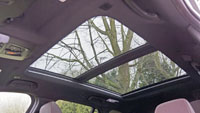
The big panoramic sunroof above should certainly reduce any feelings of claustrophobia, while anyone scared of the dark can use the LED reading lights to quell their fear, which shouldn’t negatively impact the X1 driver’s view ahead at night. Unfortunately no seat warmers could be found for rear passengers, which is a strange shortcoming in this class, but at least rear surface treatments and other details are just as nice as those found up front.
The cargo area is well finished too, with good quality carpets covering the sidewalls, the cargo floor, which is removable and exposes a big hidden storage compartment below, plus the carpeted rear seatbacks are split in the category’s optimal 40/20/40 configuration. This makes the X1 perfect for skiers that bring along rear passengers, as you can stow skis (or any other long items) down the middle while rear occupants enjoy the more comfortable window seats. The rearmost cargo compartment provides 505 litres (17.8 cubic feet) of space, which is sizeable, while levers on each sidewall automatically lower those just-noted seatbacks down for an even more accommodating 1,550-litre (54.7 cubic-foot) storage area.
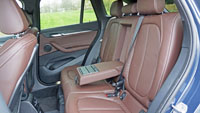
Back up front, the X1 gets a fairly conventional looking primary gauge cluster consisting of two big analogue dials, albeit they seem as if they’re floating amid a digital background that’s particularly attractive when lit up at night. That background is a multi-information display of course, filled with a comprehensive assortment of functions.
Atop the dash in the centermost position is a large, wide, high-definition infotainment display featuring beautiful colours and deep contrasts, plus very attractive and highly functional graphics. The system is a step above some competitors in that it’s not only controlled by BMW’s console-mounted iDrive dial and quick-access switchgear, but can also be activated through its fully capacitive touchscreen that lets you tap, pinch, and swipe to your heart’s content, just like with a tablet or smartphone. It’s a very smart and quick responding system too, while all of its various functions performed just as advertised during my weeklong test, including the navigation system that took me exactly where I wanted to go multiple times (not always the case).
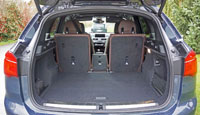
The audio upgrade provided great sound quality as well, while the X1 includes some regular analogue stereo controls on the centre stack such as a power/volume dial and a row of radio presets just above a comprehensive set of dual-zone auto climate controls. It’s all nicely organized, adding to this little BMW’s overall impressiveness.
In the case of the BMW X1, following the crowd is a very good idea. After all, a vehicle won’t be able to earn top spot in a given class by chance, which is why those considering a small luxury SUV should put BMW’s X1 high on their shopping list. It truly is excellent in most every way.
Story credit: Trevor Hofmann

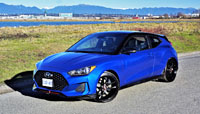
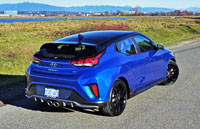
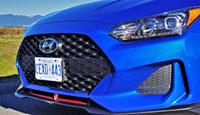
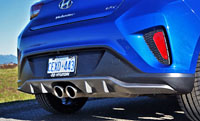
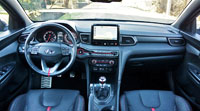
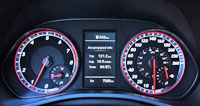
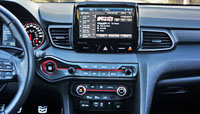
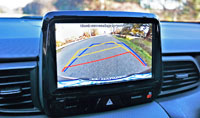
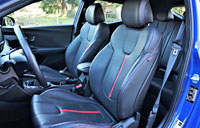
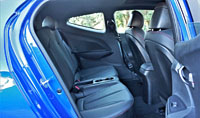
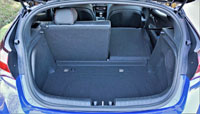
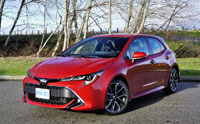
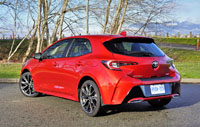
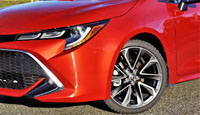
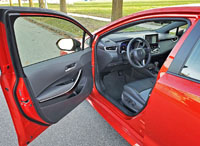
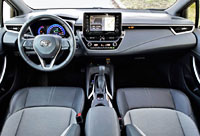
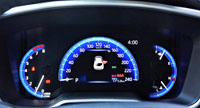
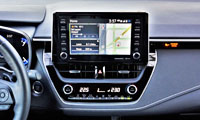
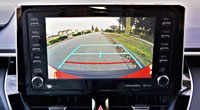
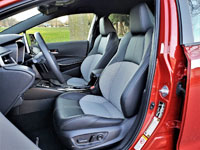
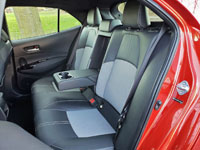
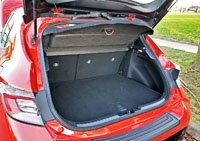
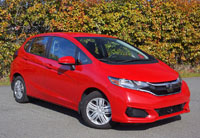
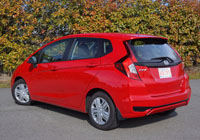
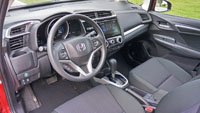
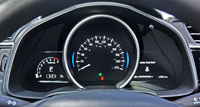
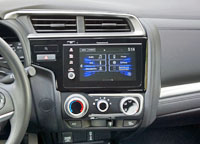
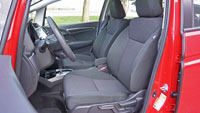
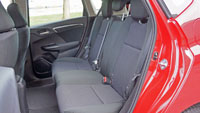
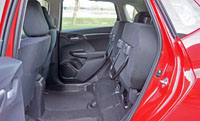
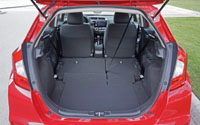
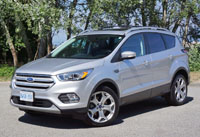
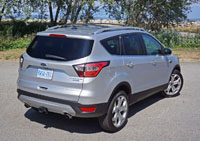
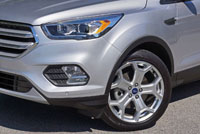
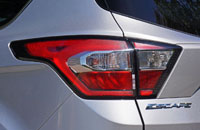
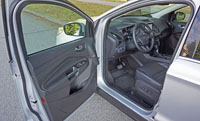
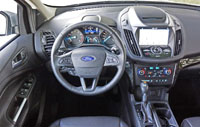
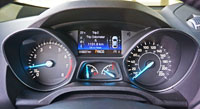
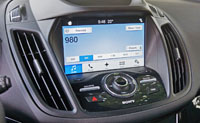
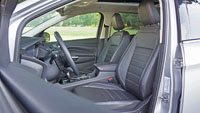
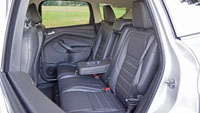
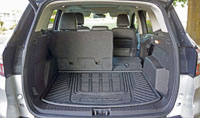
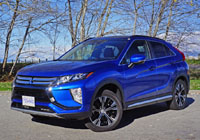
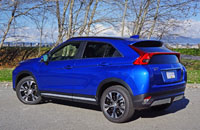
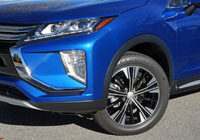
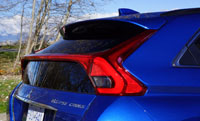
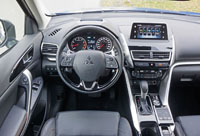
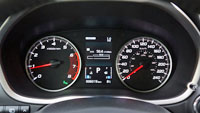
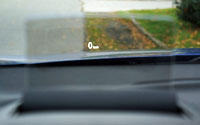
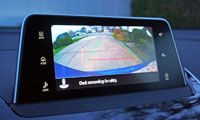
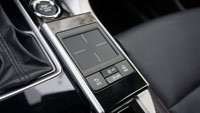
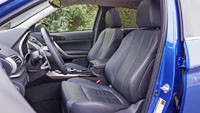
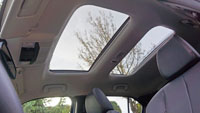
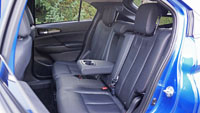
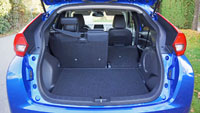
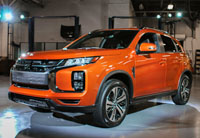
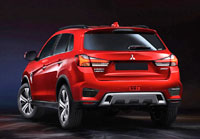
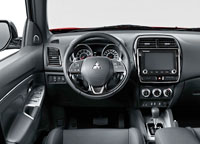
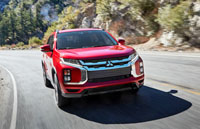
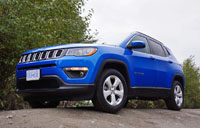
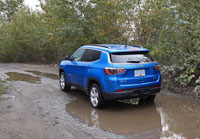
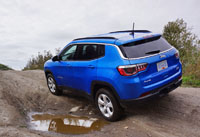
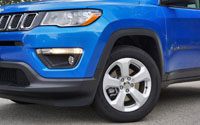
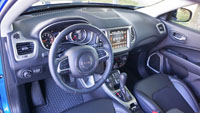

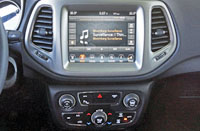
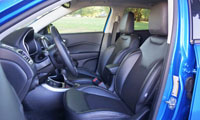
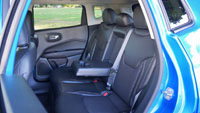
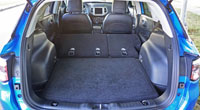
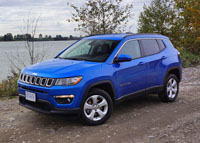
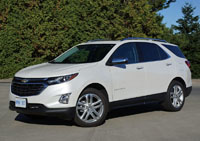
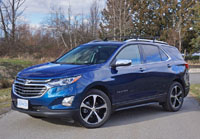
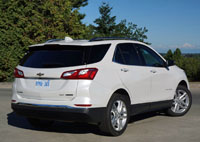
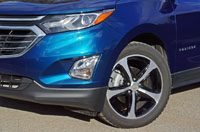
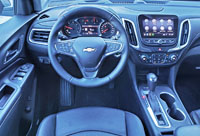
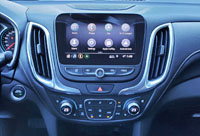
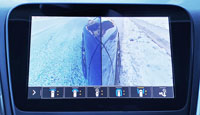
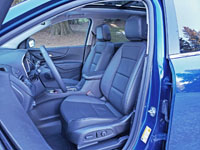
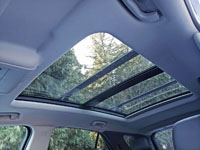
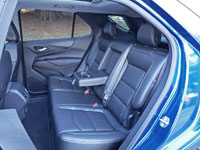
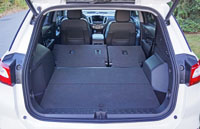
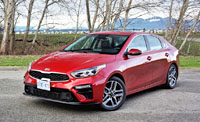
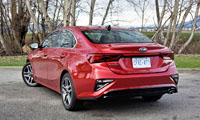
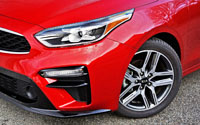
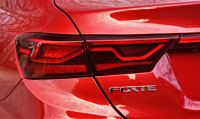
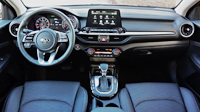

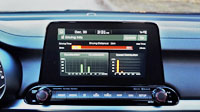
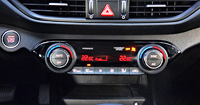
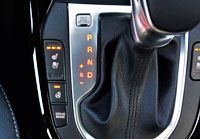
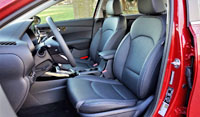
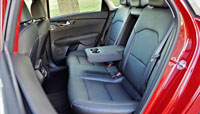 After setting up the driver’s seat for my body type, I sat directly behind in order to test rear seat roominess. The result was loads of space for my feet, plus about five inches in front of my knees, another three and a half or so over my head, about five beside my outer shoulder, and four next to my hip. In other words, the Forte provides a lot of room for rear passengers, and plenty of comfort too.
After setting up the driver’s seat for my body type, I sat directly behind in order to test rear seat roominess. The result was loads of space for my feet, plus about five inches in front of my knees, another three and a half or so over my head, about five beside my outer shoulder, and four next to my hip. In other words, the Forte provides a lot of room for rear passengers, and plenty of comfort too.